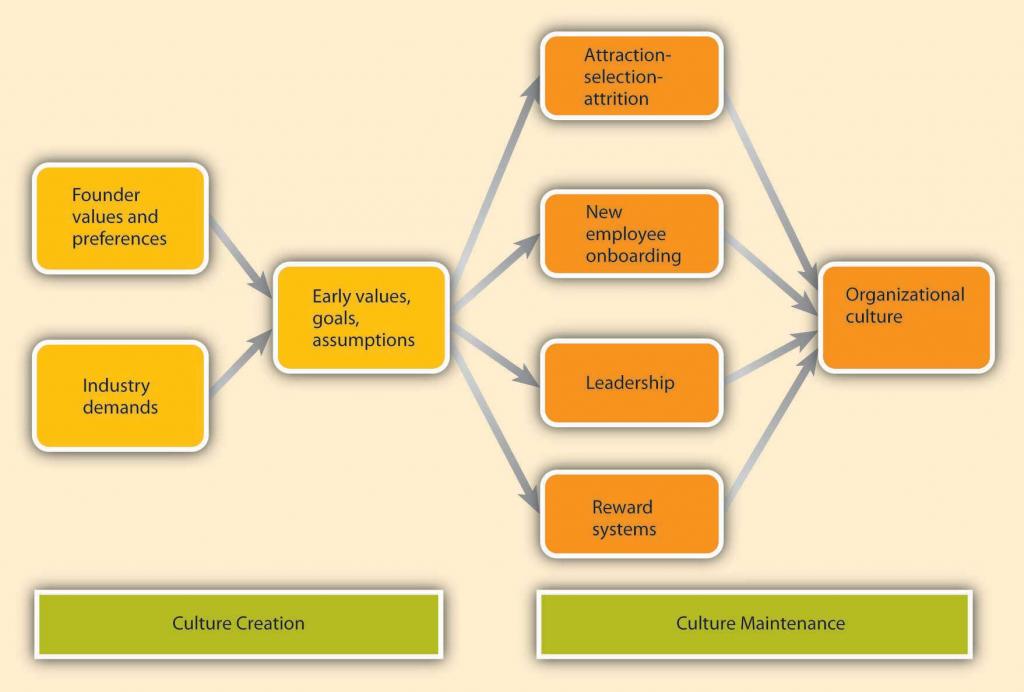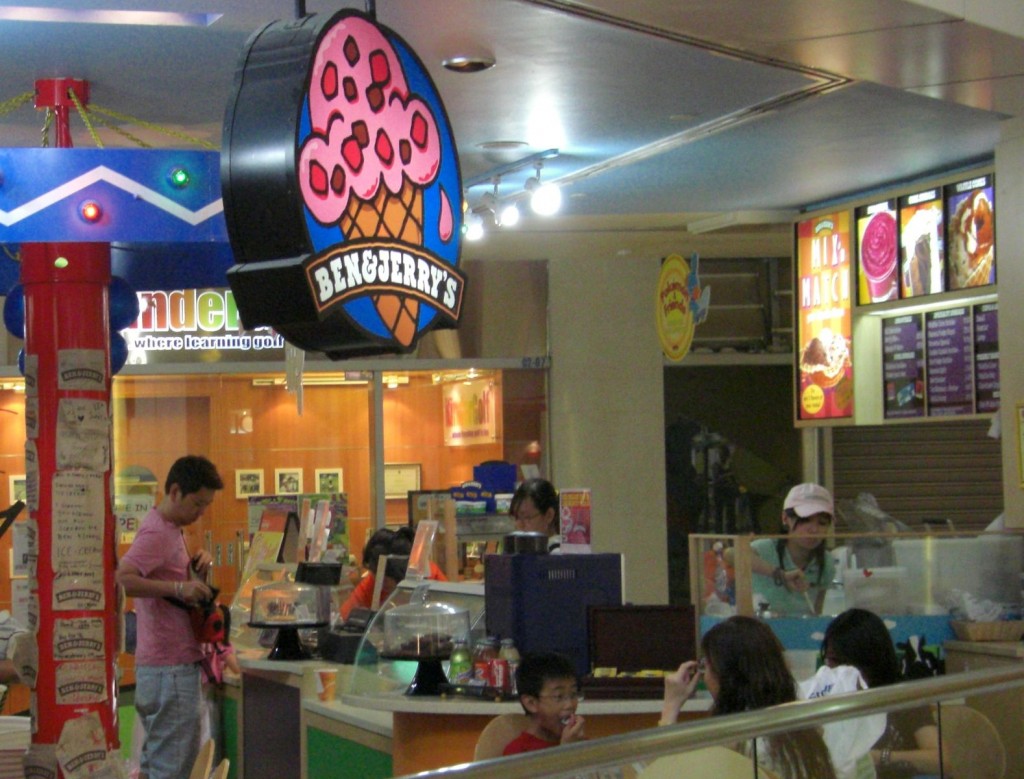8.5: Creating and Maintaining Organizational Culture
- Page ID
- 4811
Learning Objectives
- Understand how cultures are created.
- Learn how to maintain a culture.
- Recognize organizational culture signs.
How Are Cultures Created?
Where do cultures come from? Understanding this question is important in understanding how they can be changed. An organization’s culture is shaped as the organization faces external and internal challenges and learns how to deal with them. When the organization’s way of doing business provides a successful adaptation to environmental challenges and ensures success, those values are retained. These values and ways of doing business are taught to new members as the way to do business (Schein, 1992).
The factors that are most important in the creation of an organization’s culture include founders’ values, preferences, and industry demands.
Figure 8.11 Model Describing How Cultures Are Created and Maintained

Founder Values
A company’s culture, particularly during its early years, is inevitably tied to the personality, background, and values of its founder or founders, as well as their vision for the future of the organization. When entrepreneurs establish their own businesses, the way they want to do business determines the organization’s rules, the structure set up in the company, and the people they hire to work with them. For example, some of the existing corporate values of the ice cream company Ben & Jerry’s Homemade Holdings Inc. can easily be traced to the personalities of its founders Ben Cohen and Jerry Greenfield. In 1978, the two high school friends opened up their first ice-cream shop in a renovated gas station in Burlington, Vermont. Their strong social convictions led them to buy only from the local farmers and devote a certain percentage of their profits to charities. The core values they instilled in their business can still be observed in the current company’s devotion to social activism and sustainability, its continuous contributions to charities, use of environmentally friendly materials, and dedication to creating jobs in low-income areas. Even though Unilever acquired the company in 2000, the social activism component remains unchanged and Unilever has expressed its commitment to maintaining it (Kiger, 2005; Rubis, et. al., 2005; Smalley, 2007).
Founder values become part of the corporate culture to the degree to which they help the company be successful. For example, the social activism of Ben and Jerry’s was instilled in the company because the founders strongly believed in these issues. However, these values probably would not be surviving 3 decades later if they had not helped the company in its initial stages. In the case of Ben and Jerry’s, these values helped distinguish their brand from larger corporate brands and attracted a loyal customer base. Thus, by providing a competitive advantage, these values were retained as part of the corporate culture and were taught to new members as the right way to do business.
Figure 8.12

Ben & Jerry’s has locations around the world, including this store in Singapore.
Waycool27 – BenJerry-UnitedSquare – public domain.
Industry Demands
While founders undoubtedly exert a powerful influence over corporate cultures, the industry characteristics also play a role. Companies within the same industry can sometimes have widely differing cultures. At the same time, the industry characteristics and demands act as a force to create similarities among organizational cultures. For example, despite some differences, many companies in the insurance and banking industries are stable and rule-oriented, many companies in the high-tech industry have innovative cultures, and those in nonprofit industry may be people-oriented. If the industry is one with a large number of regulatory requirements—for example, banking, health care, and high-reliability (such as nuclear power plant) industries—then we might expect the presence of a large number of rules and regulations, a bureaucratic company structure, and a stable culture. The industry influence over culture is also important to know because this shows that it may not be possible to imitate the culture of a company in a different industry, even though it may seem admirable to outsiders.


